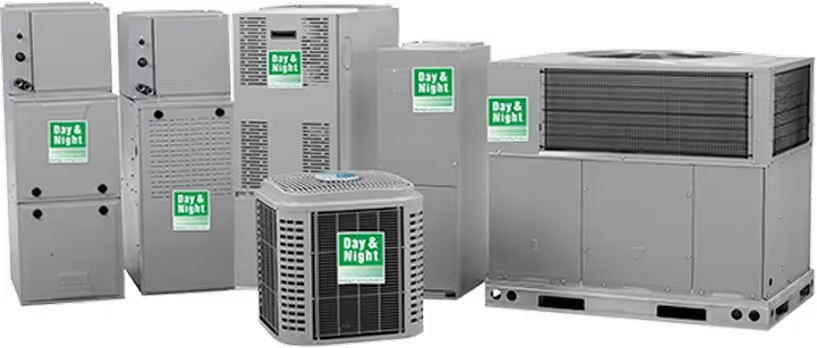Selecting an appropriate heat pump for your residence in Atascadero ensures year-round comfort, reduced energy expenses, and a diminished carbon footprint compared to traditional separate heating and cooling systems. Given the Central Coast's climate, characterized by hot, dry summers and cool, occasionally damp winters, modern heat pumps are particularly well-suited.

Why a heat pump works well in Atascadero
- Atascadero’s mild winters and long cooling season make heat pumps efficient: they move heat instead of generating it, so operating costs are typically lower than electric resistance or older gas systems.
- Modern cold-climate and variable-speed units handle occasional cold snaps and provide quieter, more even indoor temperatures.
- Ductless mini-split heat pumps are a great option for older homes or additions where ductwork is limited or inefficient.
Services covered
- Consultation and system selection - Assessing your home, lifestyle, and energy goals to recommend the right heat pump type (ducted vs ductless, single-speed vs inverter/variable-speed).
- Load calculation and system sizing - Accurate Manual J load calculations and ductwork analysis to prevent undersizing or oversizing.
- Professional installation and commissioning - Careful refrigerant handling, electrical work, and mechanical installation followed by full startup and performance testing.
- Routine maintenance and seasonal tune-ups - Biannual checks to preserve efficiency and extend lifespan.
- Diagnostics and common repairs - Troubleshooting refrigerant leaks, electrical failures, defrost issues, compressor problems, and thermostat faults.
- Efficiency and cost comparison - Side-by-side comparisons with conventional furnaces and central AC to show expected energy savings and payback.
- Rebates and financing guidance - Identifying potential local, state, or federal incentives and typical financing routes.
- Post-installation testing and performance verification - Ensuring the system delivers rated capacity and proper airflow.
Common heat pump issues in Atascadero homes
- Reduced heating output during cooler nights — often caused by incorrect refrigerant charge, airflow restriction, or defrost cycle problems.
- Short cycling or frequent on/off cycles — usually a sizing, thermostat, or control issue.
- Increased energy use — clogged filters, dirty coils, or failing components can reduce efficiency.
- Outdoor unit noise or vibration — loose mounting, fan motor wear, or debris buildup.
- Refrigerant leaks — lower cooling/heating capacity and higher electrical draw.
- In ducted systems, duct leaks and poor insulation are common contributors to performance loss.
Diagnostic approach and repair process
- Verify homeowner concerns and record operating symptoms and history.
- Run diagnostic checks: thermostat calibration, electrical amp draws, compressor operation, fan speeds, and system error codes.
- Measure temperature split and static pressure to confirm airflow; use manifold gauges to verify refrigerant pressures and superheat/subcooling.
- Inspect coils, filters, drain lines, and outdoor unit condition.
- Provide a clear repair plan: replace failed electrical components (capacitors, contactors), repair refrigerant leaks and recharge to spec, address defrost cycle faults, or recommend duct sealing or insulation work.
- Retest after repairs to confirm restored performance.
Installation and system sizing — why it matters
Proper sizing and correct installation are the foundation of a long-lasting heat pump system. An undersized unit won’t meet comfort needs on the hottest or coldest days; an oversized unit will short cycle, increasing wear and humidity problems. A professional technician will perform:
- Manual J load calculations
- Ductwork inspection and Manual D if modifications are needed
- refrigerant line sizing and proper refrigerant charge
- Electrical circuit and breaker verification
- Proper placement to reduce noise and ensure clearance and airflow
Ductless mini-splits are an excellent alternative when ducts are inefficient or nonexistent — they enable zoned control and reduce lost energy in duct runs.
Maintenance and seasonal tune-ups
Regular maintenance restores and preserves efficiency. A recommended schedule:
- Every 1–3 months: Replace or clean air filters.
- Annually (spring and fall tune-ups): Clean coils, check refrigerant levels, test defrost cycle, inspect electrical components, clear condensate drains, verify thermostat operation, and clean/level outdoor units.
- Every 3–5 years: Professional inspection of compressor, reversing valve, and overall system performance; consider protective coatings for outdoor units if near coastal areas.
Proper maintenance reduces emergency repairs, improves indoor comfort, and supports manufacturer warranties.
Efficiency and cost-savings vs conventional systems
- Heat pumps can cut heating energy use by 30–60% compared to electric resistance heaters and often outperform older gas furnaces when measured by total energy cost in mild climates.
- Variable-speed inverter heat pumps modulate to match demand, reducing cycling losses and delivering quieter operation and better humidity control.
- When paired with high-efficiency duct sealing and programmable thermostats, heat pumps provide consistent comfort with lower monthly utility bills in Atascadero’s climate.
Rebates, incentives, and financing
Homeowners in California often qualify for a mix of incentives: state programs, local utility rebates, and federal energy credits may apply to heat pump installations and upgrades. Financing options are commonly available to spread upfront costs over time. Because incentive programs change, homeowners should verify current eligibility and program details before purchase.
Post-installation testing and performance checklist
- Confirm correct refrigerant charge and proper pressures under load conditions.
- Measure supply and return air temperatures and verify design temperature split.
- Test electrical connections, breaker coordination, and safety controls.
- Validate airflow and static pressures; ensure dampers/zone controls function correctly.
- Run heating and cooling modes to confirm reversing valve operation and defrost performance.
- Check sound levels and vibration isolation for occupant comfort.
Final considerations
For Atascadero homeowners seeking efficient, flexible heating and cooling, a professionally sized and installed heat pump is a compelling option. When paired with regular maintenance and careful commissioning, heat pumps deliver reliable comfort through the Central Coast seasons while lowering energy use and environmental impact. Investing in the right consultation, installation, and service plan ensures the system meets your home’s needs now and for years to come.

Schedule Expert Service

Featured Manufacturer
Discover the innovative solutions offered by our featured manufacturer, known for their commitment to quality and excellence.

Customer Testimonials
Our customers consistently praise our exceptional service and professionalism. We are committed to exceeding expectations and delivering outstanding results.










